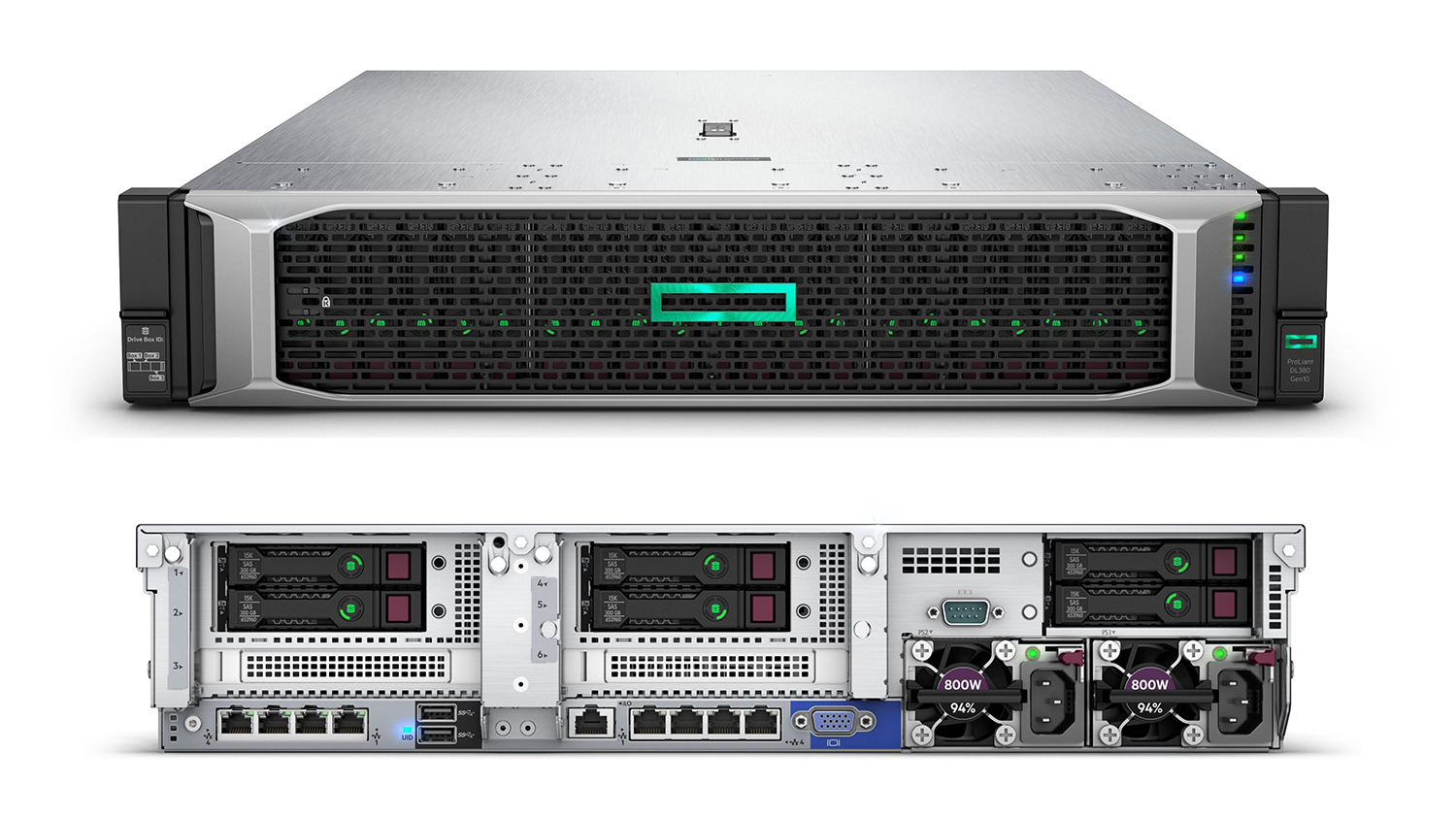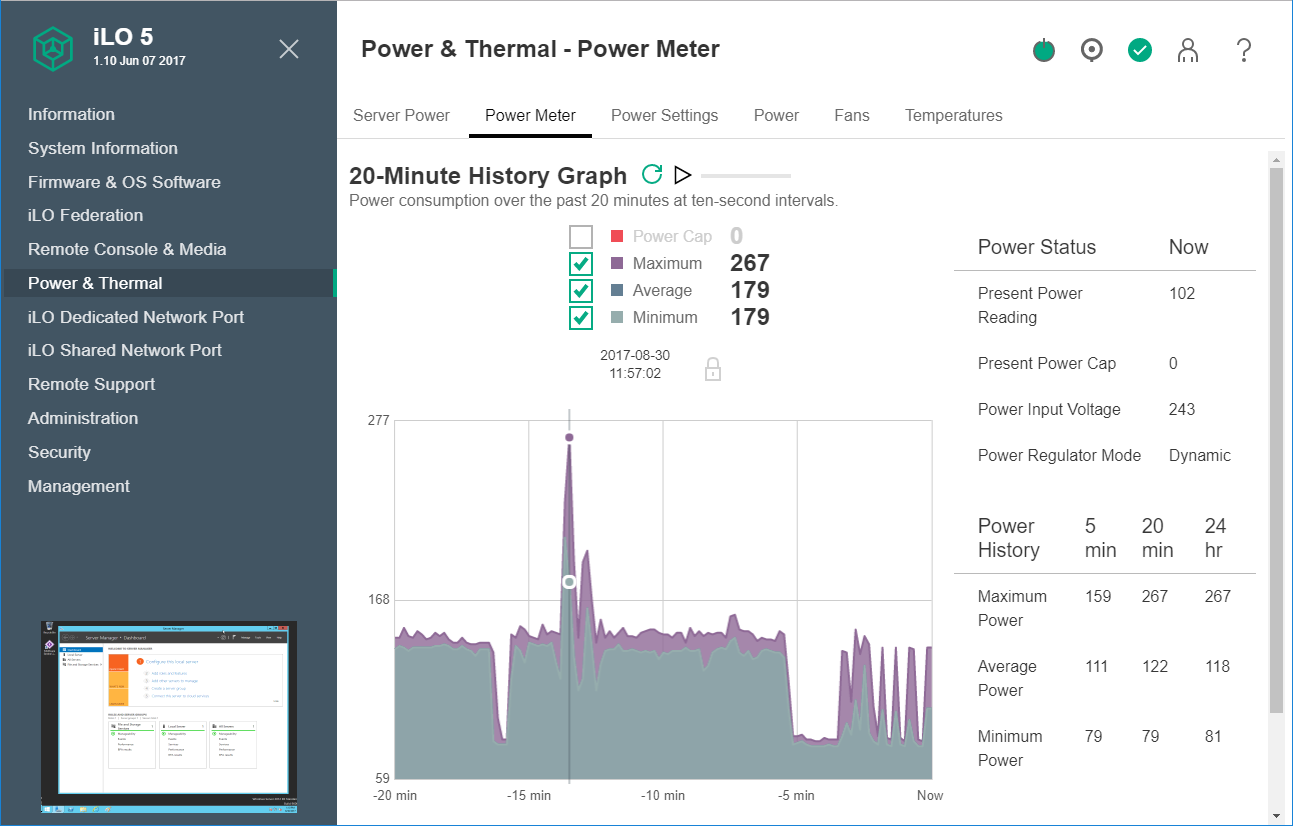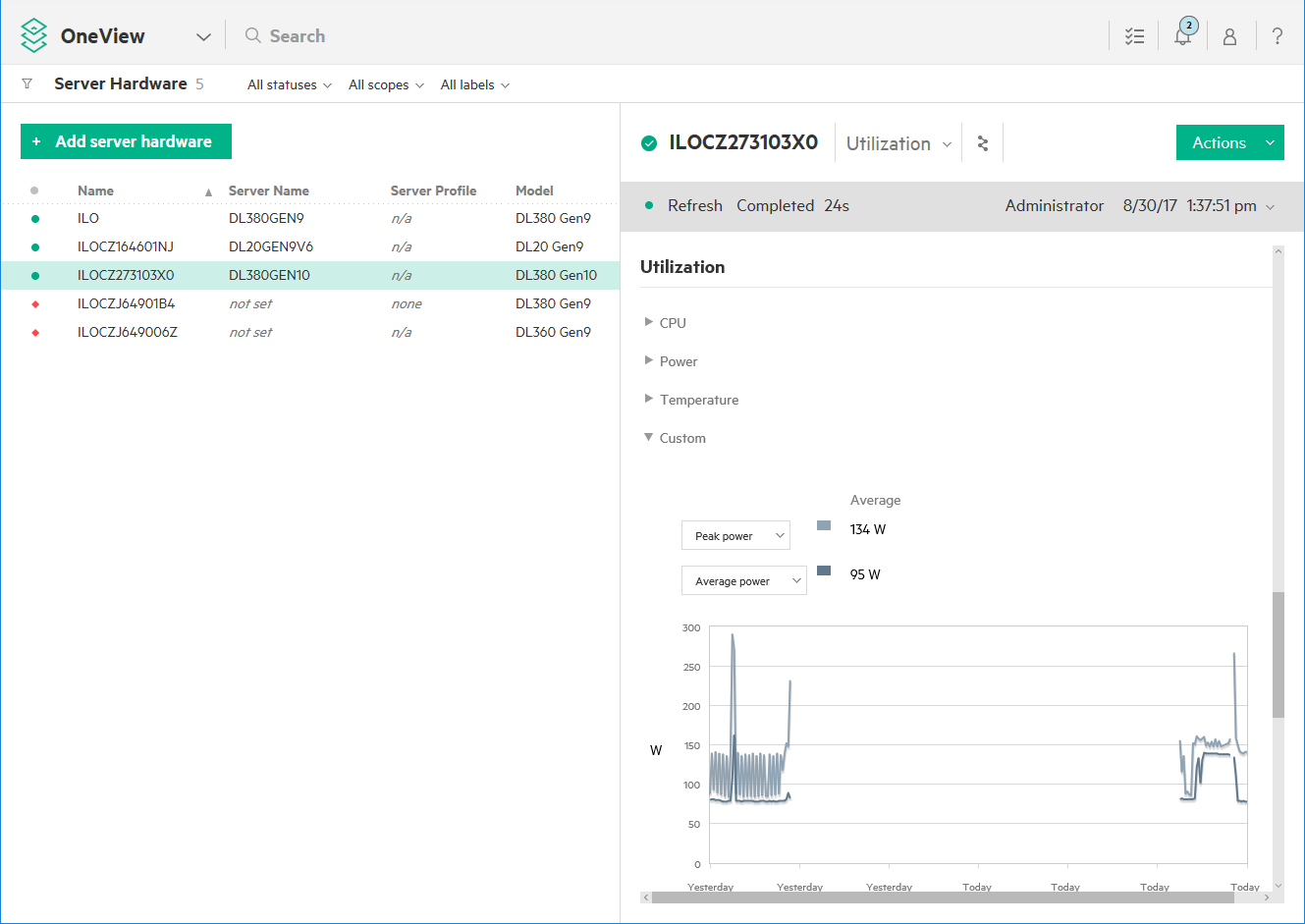HPE ProLiant DL380 Gen10 review
HPE’s flagship 2U rack server gets a massive Gen10 makeover and showcases Intel’s Xeon Scalable CPUs


Probably the most versatile 2U rack server on the planet, the DL380 Gen10 delivers a superb range of new features including big storage choices, slick iLO 5 management and tough security measures
-
+
Great value; Xeon Scalable CPUs; Highly expandable; Extensive storage options; Quality iLO 5 management; Strong platform security

Management and security
The iLO 5 uses a new ASIC and its Secure Start swings into action when the server is powered on. It validates its firmware using HPE's Silicon Root of Trust fingerprinting and if it fails this, it'll stop the server booting. Next up is Secure Recovery which validates the iLO firmware and if the test fails, automatically flashes it with the resident recovery image.
Included in the iLO 5 Standard license is active system ROM validation and if this fails, it'll activate the redundant system ROM. Should both ROMs fail validation, the Advanced Premium Security Edition license can run a firmware scan and repair process and will also run daily system firmware validations.
The iLO 5 is twice as fast as iLO 4 with double the memory and we found its Intelligent Provisioning OS deployment tools and virtual media services much quicker and more responsive. The iLO 5 web interface gets a major revamp making it even more informative and HPE has switched entirely to its agentless management service (AMS), negating the need to load any OS agents.
Existing users of HPE's OneView must upgrade to v3.1 to support Gen10 hardware and patience is required, as we found this takes around two hours. With this applied, we added the server's iLO 5 credentials to the lab's OneView Hyper-V VM and kept an eye on CPU and power usage plus temperatures, ran remote control sessions and powered the server up and down.

Power and networking
There's room to grow, as our model includes both 3-slot PCI-Express riser cards with space for a 2-slot tertiary riser over the PSU bay. HPE's tool free design comes into play as the two main risers can be easily removed with just a flick of the wrist.
All models come with quad embedded Gigabit ports and you can upgrade with a choice selection of FlexibleLOM mezzanine cards. The server supports one card which fits in a dedicated slot at the rear of the motherboard and HPE offers dual and quad-port fibre or copper 10GbE plus a dual-port 10/25/40GbE card.
Our system includes a pair of 800W hot-plug PSUs and HPE offers 500W and 1600W versions, but not the Flex Slot Battery Backup Module from the Gen9 servers. For a 48 virtual core server, power consumption is commendably low with it drawing 81W in idle and peaking at 272W with both CPUs under extreme load.

Conclusion
HPE's DL380 just keeps getting better with every generation and the latest Gen10 delivers new and welcome features in abundance. This highly expandable 2U rack server offers a wealth of storage choices and the new iLO 5 controller provides top-notch remote management and platform security. Enterprises and SMBs looking for a powerful and secure 2U rack server that can grow with them will find the ProLiant DL380 Gen10 an ideal partner.
Verdict
Probably the most versatile 2U rack server on the planet, the DL380 Gen10 delivers a superb range of new features including big storage choices, slick iLO 5 management and tough security measures
Chassis: 2U rack CPU: 2 x 12-core 2.3GHz Intel Xeon Gold 5118 Memory: 64GB ECC DDR4 2,400MHz (max 3TB) Drive bays: 8 x hot-plug SFF (max 30) Storage: No HDDs included as standard RAID: HPE Smart Array S100i and P408i-a SAS3/2GB with FBWC/BBU Array support: RAID0, 1, 5, 6, 10, 50, 60, 1 ADM, 10 ADM Expansion: 6 x PCI-e Gen3 slots (max 8) Network: 4 x embedded Gigabit Other: FlexibleLOM, internal USB 2 (2), microSD card slot Power: 2 x 800W hot-plug PSUs Management: HPE iLO5 Standard with Gigabit Warranty: 3yrs on-site NBD
Get the ITPro daily newsletter
Sign up today and you will receive a free copy of our Future Focus 2025 report - the leading guidance on AI, cybersecurity and other IT challenges as per 700+ senior executives
Dave is an IT consultant and freelance journalist specialising in hands-on reviews of computer networking products covering all market sectors from small businesses to enterprises. Founder of Binary Testing Ltd – the UK’s premier independent network testing laboratory - Dave has over 45 years of experience in the IT industry.
Dave has produced many thousands of in-depth business networking product reviews from his lab which have been reproduced globally. Writing for ITPro and its sister title, PC Pro, he covers all areas of business IT infrastructure, including servers, storage, network security, data protection, cloud, infrastructure and services.
-
 ‘Phishing kits are a force multiplier': Cheap cyber crime kits can be bought on the dark web for less than $25 – and experts warn it’s lowering the barrier of entry for amateur hackers
‘Phishing kits are a force multiplier': Cheap cyber crime kits can be bought on the dark web for less than $25 – and experts warn it’s lowering the barrier of entry for amateur hackersNews Research from NordVPN shows phishing kits are now widely available on the dark web and via messaging apps like Telegram, and are often selling for less than $25.
By Emma Woollacott Published
-
 Redis unveils new tools for developers working on AI applications
Redis unveils new tools for developers working on AI applicationsNews Redis has announced new tools aimed at making it easier for AI developers to build applications and optimize large language model (LLM) outputs.
By Ross Kelly Published
-
 Google layoffs continue with "hundreds" cut from Chrome, Android, and Pixel teams
Google layoffs continue with "hundreds" cut from Chrome, Android, and Pixel teamsNews The tech giant's efficiency drive enters a third year with devices teams the latest target
By Bobby Hellard Published